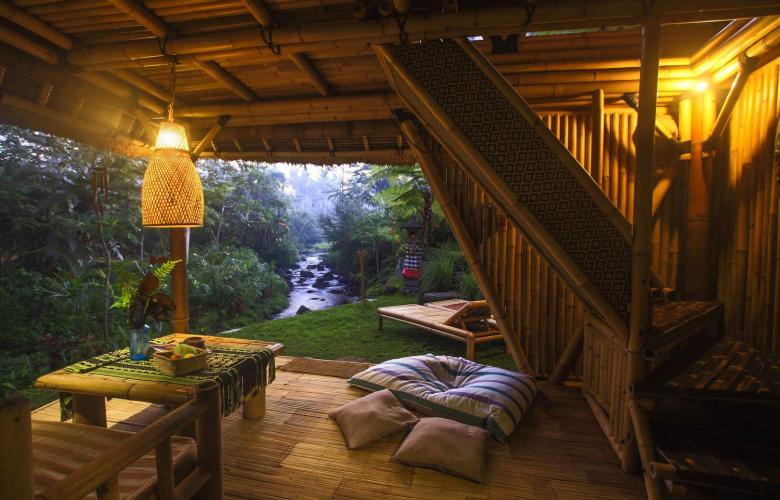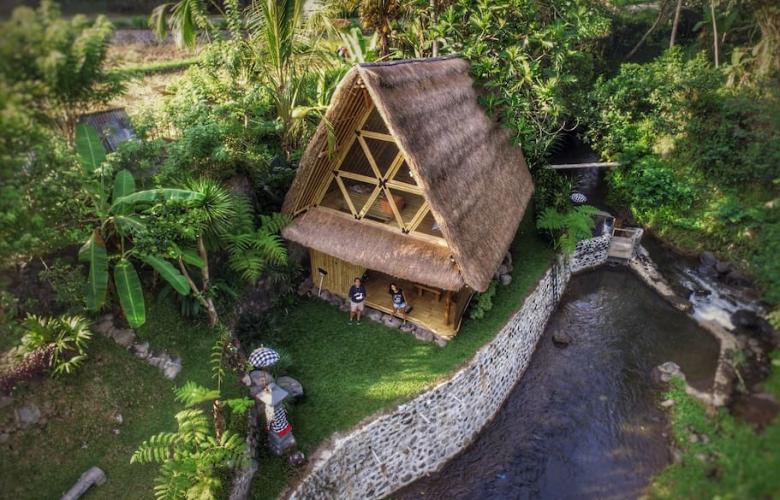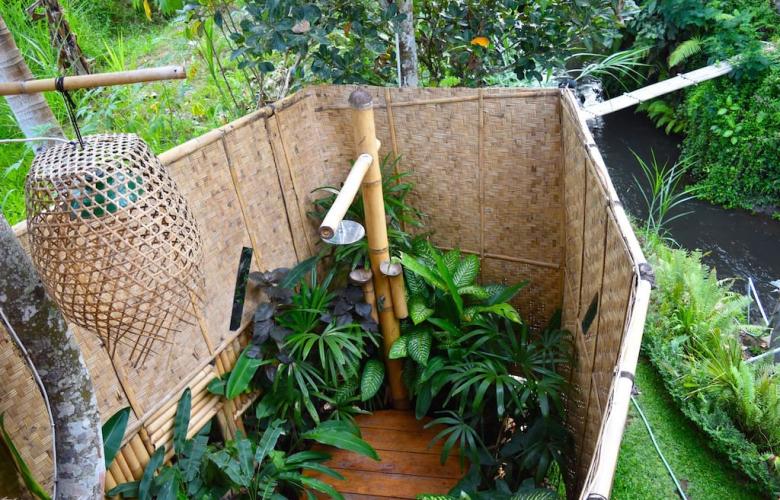The Hideout Bali Hut, a bamboo tree house tucked into the jungle
Contact
The Hideout Bali Hut, a bamboo tree house tucked into the jungle
Architects Jarmil Lhoták and Alena Fibichová create a unique sustainable structure near Bali’s Gunung Agung volcano.
The Hideout Bali Hut, designed by Jarmil Lhoták and Alena Fibichová, is next to a peaceful riverbank and looks out over picturesque rice fields, allowing guests to experience the Balinese countryside. It is located deep in Bali’s mountainous region of Gunung Agung.
Using Indonesia’s most sustainable and versatile building material, bamboo, the Hideout project started in 2014 with a simple bamboo structure. Set on a river bank, the house offers spectacular views of the lush jungle surrounding the house.
Architects Lhoták and Fibichová admired bamboo’s properties of being a fast growing and easily accessible material native to Bali. But they noted it seemed mostly used as the low-quality material for cow sheds or as a luxurious material at a few expensive resorts. They wanted to create a unique project to cater for those who want to spend a night in a bamboo house.
The bamboo for this project was harvested in local villages, reducing the footprint of the construction phase. Bamboo from local mountains in Karangasem can be considered one of the best in Bali. Growing approximately 800m above the sea level, the sugar levels in the bamboo flesh are lower, so they have great density, durability and tend to be more resilient to termites. They used smoke and non-toxic products to treat the bamboo to ensure it lasts.
Hideout Bali, the first bamboo house of this project is built in a classic style of a saddle roof and lots of open space. It has an all-bamboo construction with six main pillars and a thatched roof. The A-shaped roof provides the perfect opportunity for triangular windows, which are the most prominent design of the building. Benefiting from the tropical weather, the house also offers a beautiful outside shower, set under the trees in the garden. Wherever possible, trees were used to create an atmosphere of living in a tree house.
This article was first published on Gapura Bali
Similar to this:
Shipping Container design sets design benchmark in Lombok by Budi Pradono Architects









